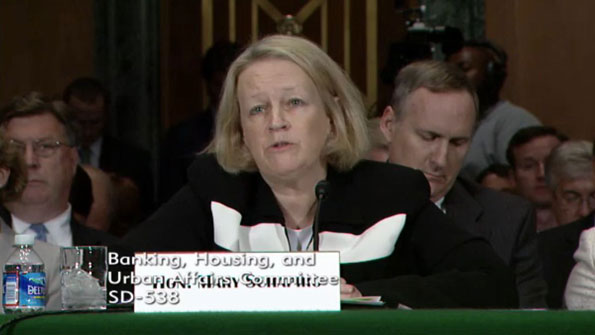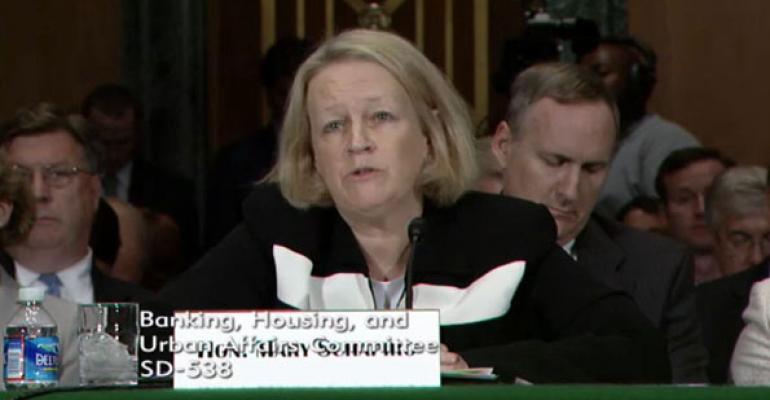 Securities and Exchange Commission Chairman Mary Schapiro was in the hot seat Thursday during a U.S. Senate Committee on Banking, Housing, and Urban Affairs hearing to discuss the controversial proposed money market fund reform. Schapiro continued to make her case for further money market fund reform, beyond the changes in 2010, but she received some push-back and a few tough questions from the committee members.
Securities and Exchange Commission Chairman Mary Schapiro was in the hot seat Thursday during a U.S. Senate Committee on Banking, Housing, and Urban Affairs hearing to discuss the controversial proposed money market fund reform. Schapiro continued to make her case for further money market fund reform, beyond the changes in 2010, but she received some push-back and a few tough questions from the committee members.
The central topic of the hearing was an SEC staff “tabulation,” as Schapiro called it, which found that sponsors have voluntarily provided support to money market funds more than 300 times since the inception of these funds in the 1970s.
The various proposals are aimed at preventing money market funds from breaking the buck in the future, as they did in late 2008. On Sept. 15 of that year, The Reserve Primary Fund, a $62 billion money market fund, broke the buck when its $785 million position in Lehman Brothers debt went to $0. From Sept. 10 to Oct. 1 of 2008, investors redeemed $396 billion from prime money market funds, according to the ICI.
Now, the SEC wants a major change to how money market funds operate. There are various options: The SEC is considering a floating net asset value for money market funds, similar to a mutual fund. This proposal has drawn a lot of criticism from the mutual fund industry.
But the SEC tabulation on sponsor support would seem to indicate that perhaps money market funds can police themselves, said Senator Jack Reed (D-R.I.) during the hearing.
Schapiro said it’s no necessarily a bad thing that the sponsors came in and supported the funds, but “there will come a time when a fund will not have, as you say, either the capacity or the willingness to step in and support its funds, and investors believe there will be that support.”
Schapiro also got some heat from Senator Patrick Toomey (R-Pa.), who questioned whether the majority of the SEC agrees with her view that the money fund industry needs more regulation. Schapiro responded by saying that some members have expressed the view that the rules from 2010 were sufficient enough and nothing else needs to be done.
Toomey responded: “I’ll go out on a limb; it seems to me that there’s a majority on the commission that does not share your view on this, but we’ll see how this develops.”
Indeed, we will see how the issue develops. With the exception of the new staff data, Schapiro seemed to present the same song and dance around the argument for reform. Another run is possible, she said, and the SEC has noticed that some fund managers are taking on more risk than others.
A couple groups came out with studies this week that point to the other side of the debate. The Association for Financial Professionals, for example, conducted its 2012 AFP Liquidity survey, which found that the majority of companies would stop investing in money market funds if the net asset value were to float, if the funds were subject to redemption holdback provisions, and if fund companies were required to raise reserve capital.
The Investment Company Institute published a study this week, suggesting that redemption restrictions would likely drive users away from money market funds.
Schapiro herself admitted that the reform may cause investors to move assets out of money market funds, but she said the costs of not doing anything outweigh that possibility. Those costs include a potential devastating run similar to that of ’08, damaged investor confidence, funds frozen because investors can’t liquidate, the short-term credit market freezing up, and the costs of small businesses and individuals not being able to access cash management accounts.

